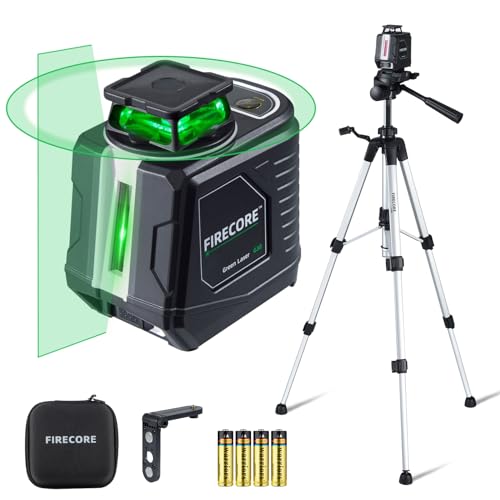Buying Guide for Line Lasers
A line-level laser is a laser device that projects a laser beam as a line instead of a point. This can be accomplished by passing the beam through a Powell or cylindrical lens. The line laser projects an illuminated line across the surface they are pointed at. Line lasers can be used indoors when installing cabinetry, tiles, dropping ceilings, or basic leveling. When framing or installing a deck, they can also be used outdoors. Line lasers are very precise and can be used in a variety of settings, both indoors and outdoors. Explore our wide range of line-lasers to find the best options for you.
Benefits of Line Lasers
Handy for DIY Projects
Laser leveler devices provide a straight-line reference along any surface, for example, a wall or floor. Straight-line lasers will most often mount to a tripod or wall so you can hammer nails or line up anything that needs to be straight while you have your hands free. Construction professionals can also benefit from these tools, as they will make DIY projects a lot easier.
Versatile Use
Renovation, assembly, rangefinder measurements, the laying of a piping system, and many other jobs and processes on a construction site can be performed with laser levels. They are also useful for mundane tasks like tiling a wall or fitting a shelf.
Accurate
Laser levels are much more accurate than hydraulic ones. There allow limited scope for human error, as there’s no need to hold it steady, especially if it’s freestanding.
Can be Used Outdoors
Laser levels are often used outdoors in construction and surveying. Many laser levels are designed for outdoor use, despite the fact that daylight can affect the visibility of beams. Green line lasers are commonly used for leveling outdoors.
Factors to Consider Before Buying Laser Lines
Laser Beam Range
The laser beam range of a line laser is the distance that the laser beam can project a straight line. Most line lasers have a range of up to 50 feet. The beam range is important to consider when purchasing a line laser because it will determine how far the laser can be used from the surface it is mounted on.
Laser Brightness & Color
Construction projects conducted outdoors or in bright light require stronger laser beams for leveling. A laser level with a green beam is a better choice than one with a red beam, which tends to be less expensive and more commonplace. Red line lasers are sufficient for most indoor tasks. It is best to avoid heavily discounted laser levels because the laser beam may be too dim for easy reading even in low light, as well as being less durable.
Mounting Ability
Plan accordingly by checking the mounting capabilities of the laser level you intend to purchase. Some levels require iron surfaces to mount magnetically, while others are able to be mounted on a variety of surfaces. Explore our selection of line lasers with different mounting options.
Manual Vs Automatic
Choosing a tool that levels manually or automatically depends on your expertise and patience. Automatic line lasers are great for those who want the convenience of not having to worry about constantly re-leveling the tool. However, they can be more expensive than their manual counterparts. Manual line lasers still require the user to level the tool periodically, but can be a more budget-friendly option.
Conclusion
Line lasers can save you a tremendous amount of time and effort. We have done several reviews on specific products for you to browse, and we will add more all the time. Line lasers are worth buying whether you're a DIYer or a professional. In most cases, they're accurate enough, and the setup time and consistency make long projects a breeze. Check out our featured section for more information on the best line lasers. After reading hundreds of reviews, we recommend top-line lasers.




































